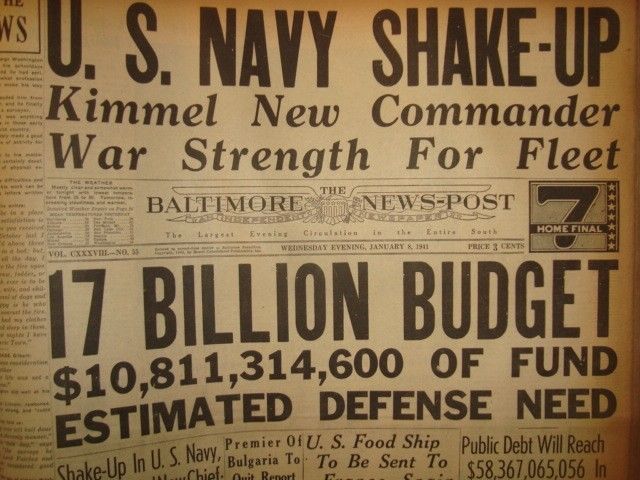Thursday 22 May 1941
 |
| Junkers Ju 87 Stukas flying in open formation from the Argos airfield (Peloponnese) to perform attacks near Crete, 22 May 1941. |
Wilson plans to invade Syria in three separate brigade columns along isolated roads - a risky gambit, as the columns would not be able to support each other. However, British military intelligence reports that French morale in Syria is very low and the invasion will be easy.
At Fallujah, the Iraqi 6th Infantry Brigade counterattacks. They have Italian-made light tanks, but the RAF provides critical support with 56 sorties. The RAF destroys an Iraqi relief column of 40 vehicles heading for Fallujah, losing an Audax biplane (the crew reaches British lines by removing the Lewis machine gun and using it to hold off Iraqis trying to capture them). The British hold their ground and capture six light tanks.
Six sailors from HMAS Yarra go undercover to conduct reconnaissance at Maqil, Iraq. This is pursuant to Operation Scoop, the full-scale invasion of Iraq.
European Air Operations: RAF Fighter Command conducts Rhubarb operations during the day. RAF Bomber Command sends 16 planes on anti-shipping missions. There is extensive reconnaissance on both sides regarding the Bismarck/Prinz Eugen sortie to the North Atlantic.
 |
| British troops in Iraq, May 1941. |
Battle of the Atlantic: U-111 (Kptlt. Wilhelm Kleinschmidt), on its first patrol and operating with Wolfpack West south of Greenland, torpedoes and sinks 4813-ton British freighter Barnby. This is additional destruction to Convoy HX-126, which has suffered badly and now is dispersed with every ship on its own. After this, U-111 heads for Lorient.
U-103 (KrvKpt. Viktor Schütze), on her fourth patrol and operating off Freetown, torpedoes and badly damages (later sinks) 6857-ton British freighter British Grenadier. The entire crew is picked up by Portuguese freighter Ganda before the ship sinks and taken to Freetown.
German Battleship Bismarck and heavy cruiser Prinz Eugen continue up the Norwegian coast. At 04:14, the destroyers detach from the Flotilla and head to Trondheim. At the very end of the day, around midnight, Admiral Lütjens orders the turn toward the northwest for the breakout through the Denmark Strait.
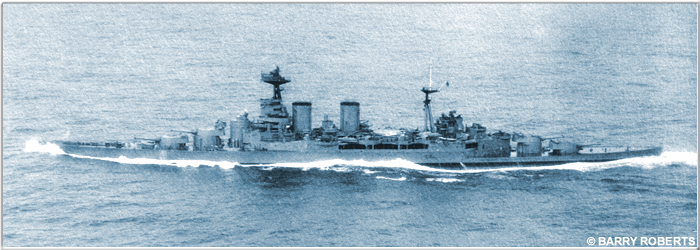 |
| HMS Hood heads toward the Denmark Strait, 22 May 1941. |
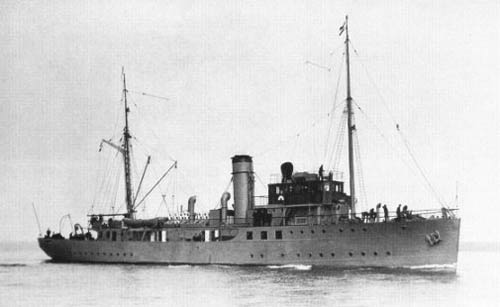 |
| The minelayer HNMS Nautilus (M 12) of the Royal Dutch Navy, lost to a collision on 22 May 1941. |
British freighter Ben Veg collides with freighter Brittany and sinks in the Irish Sea about 8 miles north of Point of Ayre, Isle of Man. Everyone survives.
The Luftwaffe bombs and damages British 5249-ton freighter Empire Progress southwest of Needles. There are four deaths. The master beaches the ship at Totland Bay, and it is later taken to Southampton for repair.
German 5088-ton freighter Ditmar Koel hits a mine and sinks off the island of Juist near Norden in Lower Saxony.
German freighter Käte Grammerstorf hits a mine and sinks in the North Sea north of Ameland, Friesland.
 |
| Italian torpedo boat Lupo (Captain Francesco Mimbelli), badly damaged on the night of 21/21 May 1941 while escorting a convoy to Crete. |
Royal Navy destroyer HMCS Saguenay completes a refit at Barrow-in-Furness.
Minelayer Teviot Bank lays minefield BS-61 in the English Channel.
Convoy SL-75 departs Gibraltar for England, Convoy WS-8B (Winston Special) departs the Clyde bound for Freetown (and ultimately Suez).
Corvette HMCS Arvida is commissioned.
US Navy tug USS Hoga is commissioned and minesweeper Nuthatch is laid down.
U-564 (Oblt. Reinhard Suhren) rescues the four-man crew of a downed Junkers Ju-88 off of Gdynia (Gotenhafen).
U-373 (Oblt. Paul-Karl Loeser) and U-571 (Kptlt. Helmut Möhlmann) are commissioned.
 |
| HMS Gloucester undertaking evasive maneuvers prior to being sunk, 22 May 1941. This photo was taken from a Luftwaffe bomber (IWM (HU 24829)). |
At Sea Off Crete:
Everyone on both sides by this point understands that Maleme airfield in the western portion of Crete is the key to the German invasion of Crete (Operation Mercury). From the British perspective, the goal is preventing German reinforcements and supplies to that location, which can only come in by two routes: Junkers Ju 52 transport planes flying from the north, and caiques from Greek ports. The Luftwaffe understands that, if it cannot maintain effective communications with its troops on Crete, they are doomed and the entire invasion will fail.Both German routes to Crete depend upon airpower. The commander of the Luftwaffe VIII Air Corps, General Freiherr Wolfram von Richthofen, has a powerful force of Bf-109s, Bf 110s, Junkers Ju 87 dive bombers, and Dornier Do-17 and Junkers Ju-88 medium bombers. These oppose Royal Navy Admiral Cunningham's Mediterranean Fleet, which has gathered 14-19 large warships (including battleships HMS Valiant and Warspite) to block the German supply routes. The Germans and Italians have no naval presence worth mentioning, and the RAF is too distant to play much of a role (considering that it evacuated Crete on 19 May). The events of Operation Mercury on 22 May 1941 thus develops into a classic confrontation between air and naval power, something that has been debated by all major powers for over twenty years.
While little recognized, the real problem for the Royal Navy is far away. Two desperately needed aircraft carriers are far away, at Gibraltar with Force H, after having just completed Operation Splice (sending planes to Malta). They could steam east... but the Bismarck is on the loose, and the carriers will be needed in the Atlantic. The Royal Navy is being stretched, and the ships off Crete are paying the price.
 |
| HMS Gloucester, sunk off Crete on 22 May 1941. The Gloucester was a modern ship, commissioned on 31 January 1939. |
East of Crete, the Royal Navy has gotten out of position due to its successful blocking of a German convoy during the night. Admiral Cunningham (in Alexandria) has ordered the ships to pursue the caiques and destroy them. This has brought them far to the north and them easy to attack. The Stukas fall on them next, slightly damaging cruisers HMS Carlisle and Naiad. These ships also escape to the west without being able to destroy the German convoy.
The early success of the Royal Navy ships in defending themselves is due to their use of massive quantities of anti-aircraft ammunition. Already, their stocks are running low, and should their guns fall silent, they would become easy prey to the accurate Luftwaffe Stukas. Gloucester has only 18% of its ammunition left, and Fiji only 30.
Around 10:30, British Force C spots an Axis convoy, escorted by torpedo boat Sagittario, south of Milos. The British ships open fire and damage Sagittario and some caiques. However, the British are soon chased off by the Luftwaffe, and light cruiser HMS Naiad suffers four near misses and has two turrets knocked out. While the ship can still steam at 16 knots, the damage is structural and thus severe. Light cruiser Carlisle is hit on the bridge, killing Captain T.C. Hampton. The entire force heads back to Port Said for repairs. Light cruiser Perth also suffers damage.
 |
| "Photograph taken by a German airman recording the sinking of HMS GLOUCESTER off the coast of Crete, 22 May 1941." © IWM (HU 1997D). |
At this point, Rear Admiral Edward King, in local command, gives up. He leaves all of the survivors of both Gloucester and Greyhound to their fate and runs back toward Alexandria with cruiser Fiji and destroyers Kandahar and Kingston. The Luftwaffe sends floatplanes to help pick up more than 500 British sailors who otherwise would perish, along with some Royal Navy destroyers who return during the night.
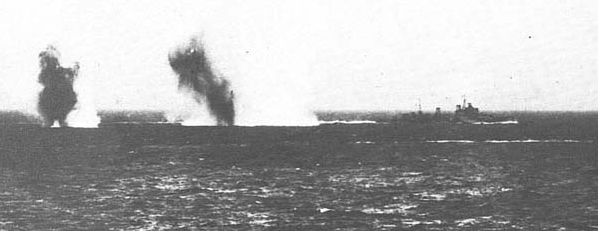 |
| HMS Fiji under attack, with bombs falling astern, just before her sinking. |
The Admiralty is furious at King's "lack of aggression." After the battle, he is court-martialed for his decision and relegated to a desk job at the Admiralty. He will never go to sea again and will retire on 15 June 1944.
The Admiralty decides to reinforce failure and sends five more destroyers from Malta. Two of them, Kashmire and Kelly, shell Maleme after dark. However, this exposes their position to the Germans, who radio Athens to send more planes early on the 23rd.
The Luftwaffe also attacks Force A1 west of Crete, damaging battleship HMS Valiant. The Luftwaffe loses five Junkers Ju-87s and five Junkers Ju-88s and has sixteen more planes damaged. Significantly, the Luftwaffe does not lose any fighters because the RAF has withdrawn theirs.
After dark, the Royal Navy maintains patrols off Crete, but the Luftwaffe continues attacking. Destroyer Havock suffers damage to its boiler room from a near miss. There are 15 deaths and ten wounded.
Force D shells and sinks Romanian freighter Carmen Sylva.
 |
| Another view from a Luftwaffe plane of HMS Gloucester rolling over on 22 May 1941 (Imperial War Museums (collection no. PC 2250). |
Seeing the way things are going, the Admiralty orders Royal Navy destroyers HMS Decoy and Hero to evacuate Greek King George and the rest of the Greek government from Crete.
Submarine Rorqual lays mines in the Gulf of Salonika. The ships of Operation Splice, the air-ferry mission to Malta, arrive back in Gibraltar. At Malta, it is a fairly quiet day, with reconnaissance patrols spotting an Axis convoy off the eastern Tunisian coast (likely returning from Tripoli). The RAF launches attacks and claims a sinking, though apparently, the Axis ships suffer no damage.
According to his Private Secretary John Colville's diary, Prime Minister Winston Churchill in the evening dismisses the losses of Fiji and Gloucester and the other ships, saying:
What do you think we build the ships for?Churchill, of course, is the former head of the Royal Navy. It is interesting to compare this sort of statement with the endless criticism that Adolf Hitler receives for similarly callous statements about Wehrmacht casualties.
 |
| Map of British counterattack, 22 May 1941. |
Maleme Airport:
The New Zealand troops at Maleme require time to be relieved by other troops in order to counterattack the vital Hill 107 which overlooks Maleme airport. The British still worry about a sea landing, so they keep many available forces on the coast nearby. Two New Zealand battalions, the 20th Battalion of the 4th Brigade and the 28th Maori Battalion of the 5th Brigade, finally launch a counterattack. While planned for 02:00, it does not get into motion until after daylight. The Allied counterattack under New Zealand Second Lieutenant Charles Upham fails despite wreaking havoc on machine-gun nests and other positions, and the Germans tighten their grip on the airfield. Upham, who goes out of his way to rescue several isolated soldiers, wins the Victoria Cross. |
| Aerial view of Maleme Airfield during Operation Mercury, with planes scattered all about on the runway. |
The Allies, meanwhile, are utterly confused about German intentions, and some commanders believe the German transports are taking Fallschirmjäger (German paratroopers) off the island rather than bringing them in.
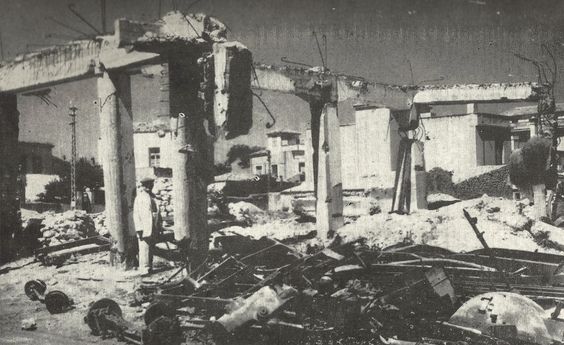 |
| Ruins at Heraklion following fighting on 22 May 1941. |
Elsewhere On Crete:
The Australian 19th Infantry Brigade contains the Fallschirmjäger attacking Retimo. The German 1st Fallschirmjäger Regiment withdraws under heavy pressure to positions east of Heraklion. With the main effort now clearly at Maleme, the goal of other German forces on the island is first and foremost to avoid capture or death.Elsewhere in North Africa, there is little ground activity. RAF bombers raid Benghazi.
 |
| "A German Pzkw Mk III tank advances through the desert during Rommel's drive on Bir Hakeim, June 1942. The tank was superior to its British rival, the Matilda, in terms of both reliability and armament." This photo may have been taken on 22 May 1941, as that is its production date. © IWM (MH 5852). |
German/Soviet Relations: Reich Ambassador Friedrich Werner von der Schulenburg with Soviet Foreign Minister Vyacheslav Molotov in Moscow, Russia. Schulenburg, who knows about Operation Barbarossa (or at least strongly suspects it), reports that it is a friendly meeting.
Anglo-US Relations: Churchill gives a candid evaluation of the fighting on Crete to President Roosevelt, calling the battle "severe, because, having no airfields within effective range, we cannot bring any Air Force into action." He adds:
Two of our cruisers and two destroyers sunk today. We are destroying many of highest-class German troops and have sunk at least one convoy.This is an extremely accurate appraisal, and much more honest than what the statement he issues to the House of Commons.
Regarding the Bismarck and Prinz Eugen, Churchill comments that "Should we fail to catch them going out, your Navy should surely be able to mark them down for us." All pretense of US neutrality, of course, is long gone.
Anglo/Ireland Relations: Churchill has an unpleasant meeting with Irish High Commissioner John Dulanty, as reported in the War Cabinet minutes. Churchill claims that Dulanty has used "the usual arguments" in opposition to an Irish draft in Northern Ireland, such as the likelihood of violent protests. Churchill responds that British public opinion is "hard and bitter" and would lead to a "permanent embitterment of feeling after the war." The War Cabinet minutes suggest that plans for a draft in Ireland will proceed despite objections, but be limited to those already in the Home Guard.
 |
| "Aerial perspective of the City of London looking east towards Tower Bridge." 22 May 1941. © IWM (HU 131469). |
If the Vichy government, in pursuance of their declared policy of collaboration with the enemy, take action or permit action detrimental to our conduct of the war or designed to assist the enemy's war effort, we shall naturally hold ourselves free to attack the enemy wherever he may be found, and in so doing we shall no longer feel bound to draw any distinction between occupied and unoccupied territory in the execution of our military plans.Vichy continues its drift toward further collaboration.
German Military: Field Marshal Albert Kesselring moves his headquarters of Luftflotte 2 from the Channel coast to Bielany, a suburb of Warsaw. The Air Fleet will operate in support of Army Group Center under Field Marshal Fedor von Bock, whose target is Moscow. Kesselring and von Bock established a close working relationship during the invasion of Poland and, later, of the Netherland and Belgium. Airfields in Poland, however, are not yet complete for all of the Luftwaffe units - many Poles are being impressed into service to clear land and build structures.
Heinrich Himmler forms a Norwegian SS organization, basing it on the German original.
Soviet Military: Destroyer Razjarennyj is launched.
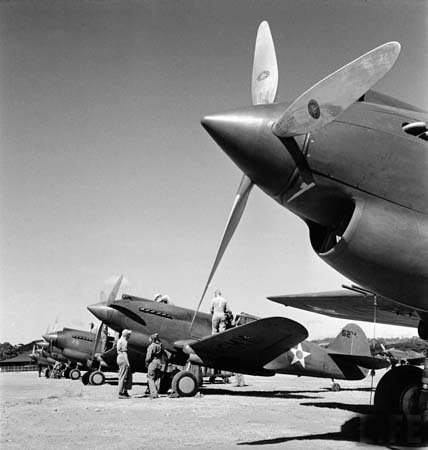 |
| P-40 Kittyhawk fighters in the Philippines in 1941. |
The US Navy continues transferring ships from the Pacific to the Atlantic.
US President Roosevelt issues orders to prepare for the seizure of the Azores.
British Government: Churchill makes a statement to the House of Commons about Crete, his third in the past three days. He states in part:
Fighting is continuing with intensity, and, although the situation is in hand, the Germans have gained some local successes, at heavy cost. They are using large numbers of airborne and parachute troops, and these are increasing daily.... At Maleme Aerodrome, 10 miles South-West of Canea, it appears that the enemy are now in occupation of the aerodrome and the area to the West of it, but the aerodrom is still under our fire. Elsewhere in this sector the coastal line remains in our hands.Churchill is silent on the Royal Navy losses at sea, which his private secretary confirms he is well aware of at this time. He simply says, "I am sorry to say that I have got no definite information as to the results, but I feel they can hardly be other than satisfactory."
In fact, the results are sea are far from satisfactory for the Royal Navy, as he well knows. Churchill also does not mention the issue of German troops wearing New Zealand uniforms, something he has claimed to be the case in the previous two statements.
 |
| "Aerial perspective of the City of London looking southeast." 22 May 1941. © IWM (HU 131470). |
Hitler's adjutant and personal friend, Walther Hewel, writes in his diary for 22 May:
... Drove up the mountain. Conference with the Chief [Ribbentrop], Raeder, and Keitel on naval strategy, convoy issue, the Raeder “interview,” and on Dakar, the Canaries and the Azores! Very interesting. The Fuhrer still vacillates in his attitude toward America, as “you cannot peer into Roosevelt’s mind.” If he wants a war, he will always find the means, even if legally we are in the right. Japan holds the key.Adolf Hitler ends his two-day vacation in Munich and meets with Admiral Erich Raeder. They discuss a possible Kriegsmarine invasion of the Azores. Hitler sees it as a base for Luftwaffe bombers. Raeder reports that, should the Germans take the Azores, they would have no way of defending them.
China: Chinese 4th Pursuit Group disperse to new airfields, and just as they are landing, 25 Japanese G3M bombers with an escort of A6M Zero fighters appear overhead. The Japanese bomb Lanzhou. Kao You-hsing, flying an I-16, still has his engine running after landing and takes off to fight the Japanese formation singlehandedly and disrupts the attack. This buys enough time for other Chinese planes to get in the air, preventing them from being destroyed on the ground. The Japanese lose one bomber, but the bomb the city without further interference.
The Chinese redirect 17 I-153s of the 5th Pursuit Group to Lanzhou to defend against the attack. However, while refueling at Tianshu (Gansu Province), all of the planes are destroyed on the ground by bombing. Lu Enlung, leader of the 5th Pursuit Group, is relieved of command.
Japanese aircraft of the 12th Kokutai also attack Chengu during the day.
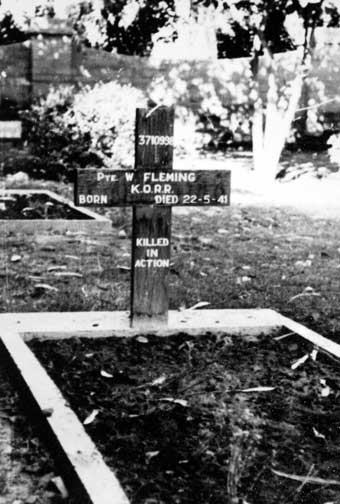 |
| Grave of Private Walter Fleming, number 3710998, 1st Battalion, King’s Own Royal Regiment, at Habbaniya War Cemetery, Iraq. KIA 22 May 1941. |
Norwegian Homefront: The German occupation authorities call striking theatrical workers in to remonstrate with them. The workers are told to get back to work "or else."
American Homefront: Technicolor film "Blood and Sand" is released. Starring Tyrone Power, Linda Darnell and Rita Hayworth, it features supporting roles by Anthony Quinn, John Carradine, and Lynn Bari. It becomes quite popular and will win the Academy Award for Best Cinematography, due in part to set designer Rouben Mamoulian using the paintings of Spanish painters Goya, El Greco and Velázquez for inspiration.
Future History: Walter Menzies Campbell, Baron Campbell of Pittenweem, born in Glasgow, Scotland. He will become a top British track-and-field athlete, holding the British record for the 100-meter sprint from 1967-1974, and thereafter a leading British politician. As of this writing, Lord Campbell is the Chancellor of the University of St Andrews.
 |
| HMS Greyhound, sunk 22 May 1941 off Crete. |
May 1941
May 1, 1941: British Hold Tobruk
May 2, 1941: Anglo-Iraq War
May 3, 1941: Liverpool Hammered
May 4, 1941: Hitler Victory Speech
May 5, 1941: Patriots Day
May 6, 1941: Stalin In Command
May 7, 1941: May Blitz
May 8, 1941: Pinguin Sunk
May 9, 1941: U-110 Captured
May 10, 1941: Hess Flies Into History
May 11, 1941: The Hess Peace Plan
May 12, 1941: Tiger Arrives Safely
May 13, 1941: Keitel's Illegal Order
May 14, 1941: Holocaust in Paris
May 15, 1941: Operation Brevity
May 16, 1941: Blitz Ends
May 17, 1941: Habbaniya Relieved
May 18, 1941: Croatia Partitioned
May 19, 1941: Bismarck at Sea
May 20, 1941: Invasion of Crete
May 21, 1941: Robin Moore Sinking
May 22, 1941: Royal Navy Destruction Off Crete
May 23, 1941: Crete Must Be Won
May 24, 1941: Bismarck Sinks Hood
May 25, 1941: Lütjens' Brilliant Maneuver
May 26, 1941: Bismarck Stopped
May 27, 1941: Bismarck Sunk
May 28, 1941: Crete Lost
May 29, 1941: Royal Navy Mauled Off Crete
May 30, 1941: Sorge Warns, Stalin Ignores
May 31, 1941: British Take Baghdad
2020




